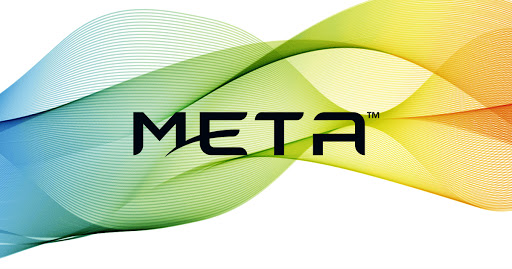Metamaterial Inc., the Dartmouth-based advanced materials developer that last week became Atlantic Canada’s first publicly traded unicorn, said on an investor call Tuesday that it expects to complete its first commercial production facility in the first half of 2022.
Meta achieved unicorn status thanks to a reverse listing on the Nasdaq that left it with a market cap of more than C$2.7 billion. On the investor call, CEO George Palikaras detailed his plans for expansion into a raft of industries, including telecommunications, medtech and renewable energy generation.
The company's shares closed Tuesday at US$7.19, leaving Meta’s market cap at just shy of US$2.03 billion, or about C$2.53 billion.
“Over the last 10 years, we have reached the point where we are now scaling the commercialization of our technology platform,” said Palikaras on the call. “So first, we had to develop the software and tools required to design and prototype metamaterials tailored for different applications. It was possible to produce our designs at only [very small] scales using semiconductor equipment.
“Before we could commercialize our designs, we had to actually acquire and develop the tools and processes to fabricate metamaterials for the first time over large areas with semiconductor accuracy.”
Founded in 2011, Meta uses artificial intelligence systems to design new synthetic materials in a fraction of the time it would take a team of human engineers: days, rather than years. Eventually, Palikaras expects the materials to be manufactured by Meta’s clients under licensing deals, rather than by Meta itself.
Before the Nasdaq deal, Meta traded on the Canadian Securities Exchange. The owners of those shares are set to receive replacement shares under the new ticker symbol, $MMAT, but complex paperwork and the Canada Day holiday have slowed the exchange process, CFO Kenneth Rice said on the call.
Here’s a look at the new product offerings Meta is planning:
5G reflection film
Meta has inked a deal with Japan’s Sekisui Chemical to develop a film to reflect 5G radio waves, improving the next-gen cell-phone technology’s underwhelming range by bending the radiation around buildings and other obstacles.
Anti-ice film for self-driving car sensors
Meta is developing a film with thin strands of metal, or “nanoweb,” in it to prevent buildups of ice and condensation on windscreens, as well as on the sensors that allow autonomous vehicles to locate obstacles and road markings. The tech will take up less room than conventional defroster systems, freeing up space for other uses.
MRI quality improvement
Meta is working on a technology to improve the “signal-to-noise” ratio of MRI machine output. The company expects its system to allow for higher-resolution images than can currently be produced and reduce the amount of time patients must spend in the machine.
Blood glucose testing
Meta announced Tuesday morning it had completed a 27-month joint project with the British government and London’s Brunel University to develop a prototype blood glucose testing system for diabetes management. The device does not require the use of needles, instead scanning a user’s blood through their skin.
Palikaras warned that the project still faces “signifianct challenges” in research and development before it can be made commercially viable.
Geothermal electricity generation
Conventional geothermal electricity is made by using steam to spin a turbine. In April, Meta inked a deal with Houston, Texas-based Sage Geosystems to develop materials for building “subsurface thermo-electric generators,” which will use ambient heat to generate electricity without the need for turbines.
Read our recent report on Meta's entry into the geothermal market.
Better solar panels
Meta is working on a material to make solar panels more efficient at trapping light and absorbing it from shallow angles, reducing the need for solar farms to tilt their panels in time with the movement of the sun.
Augmented reality eyeglasses
Meta is also readying a second nanoweb system, this one for adding augmented reality capabilities to prescription eyeglasses. The strands of nanoweb will be too thin to be seen with the naked eye, allowing them to be embedded in lenses and used to display images to the wearer.










